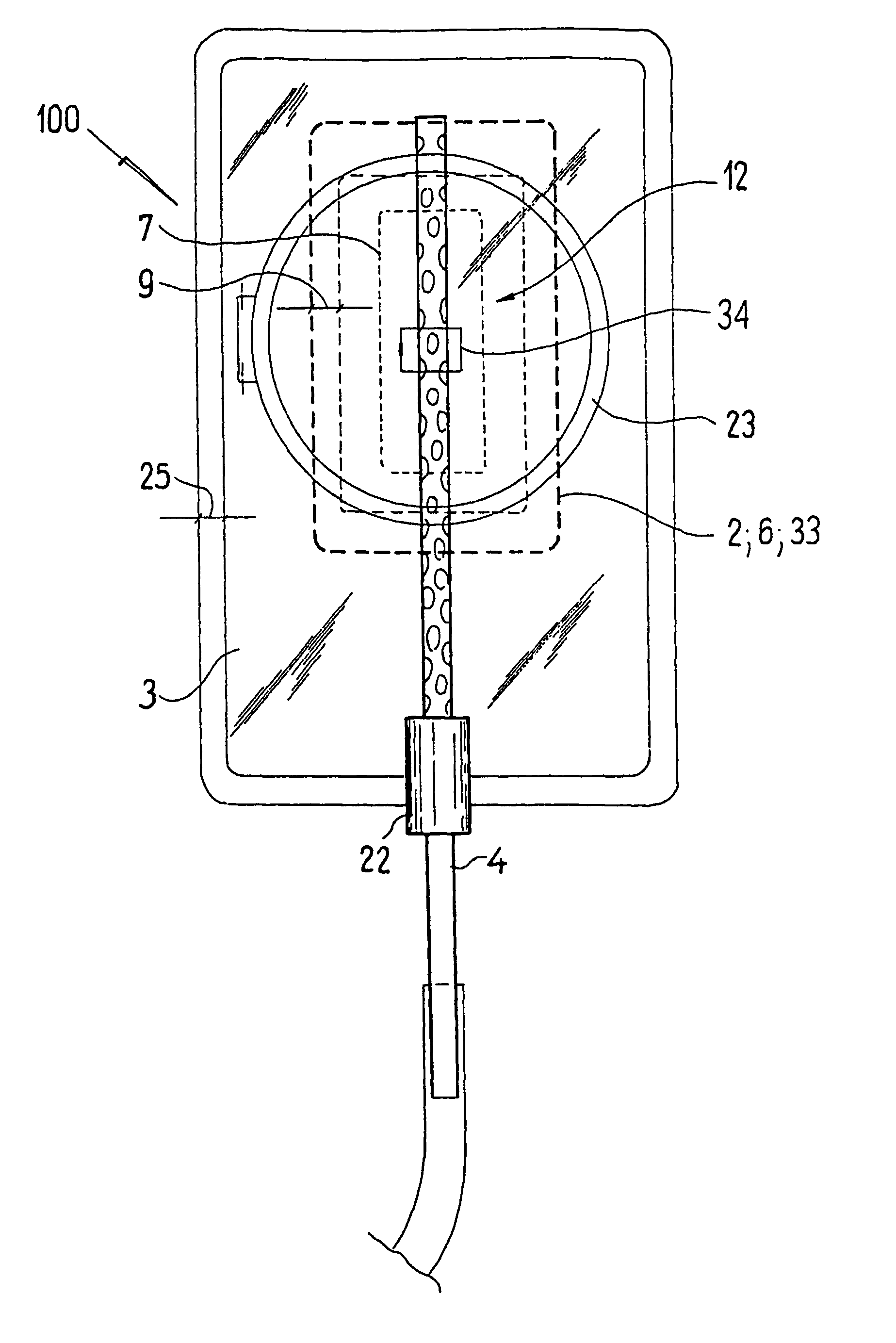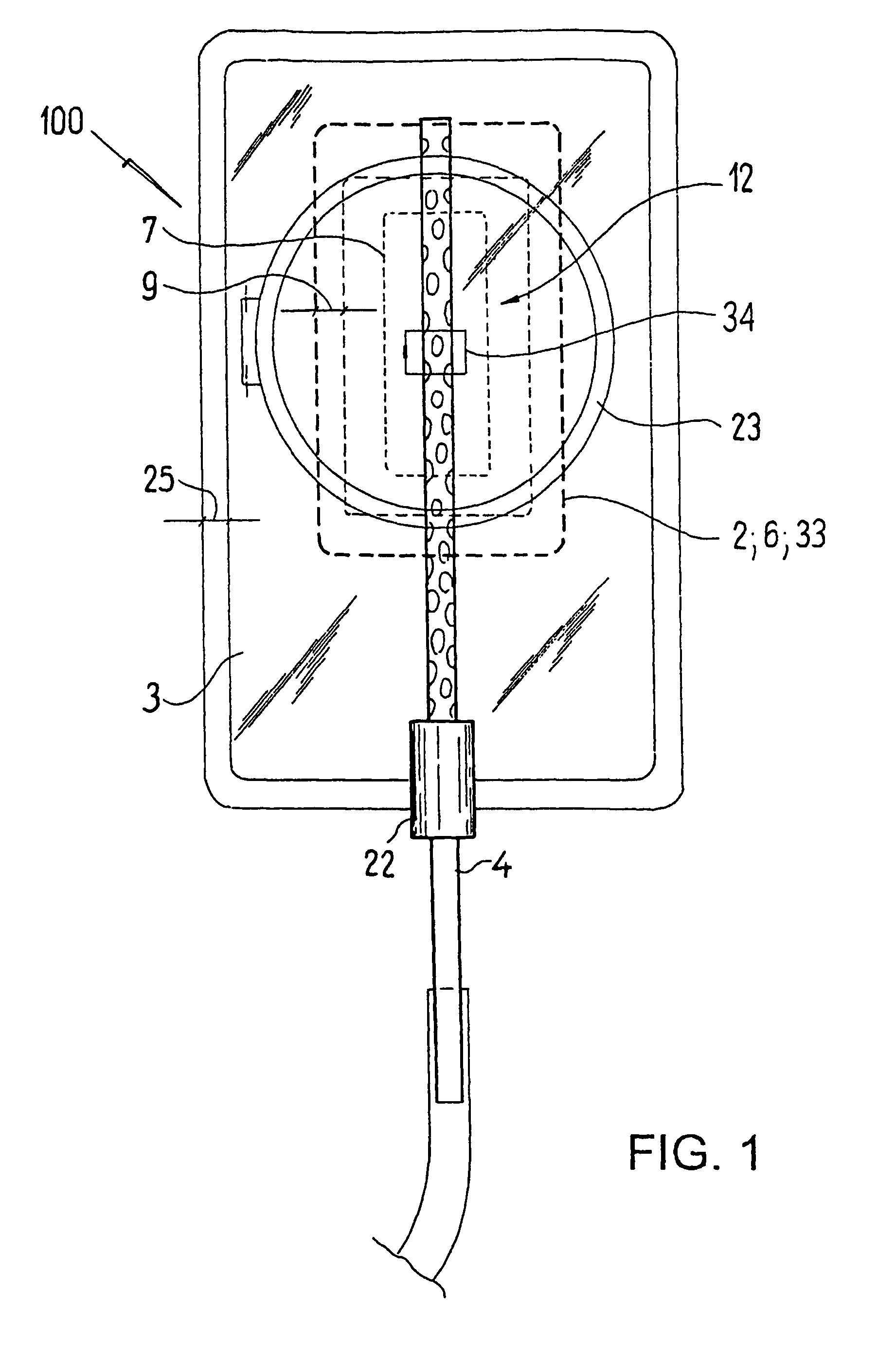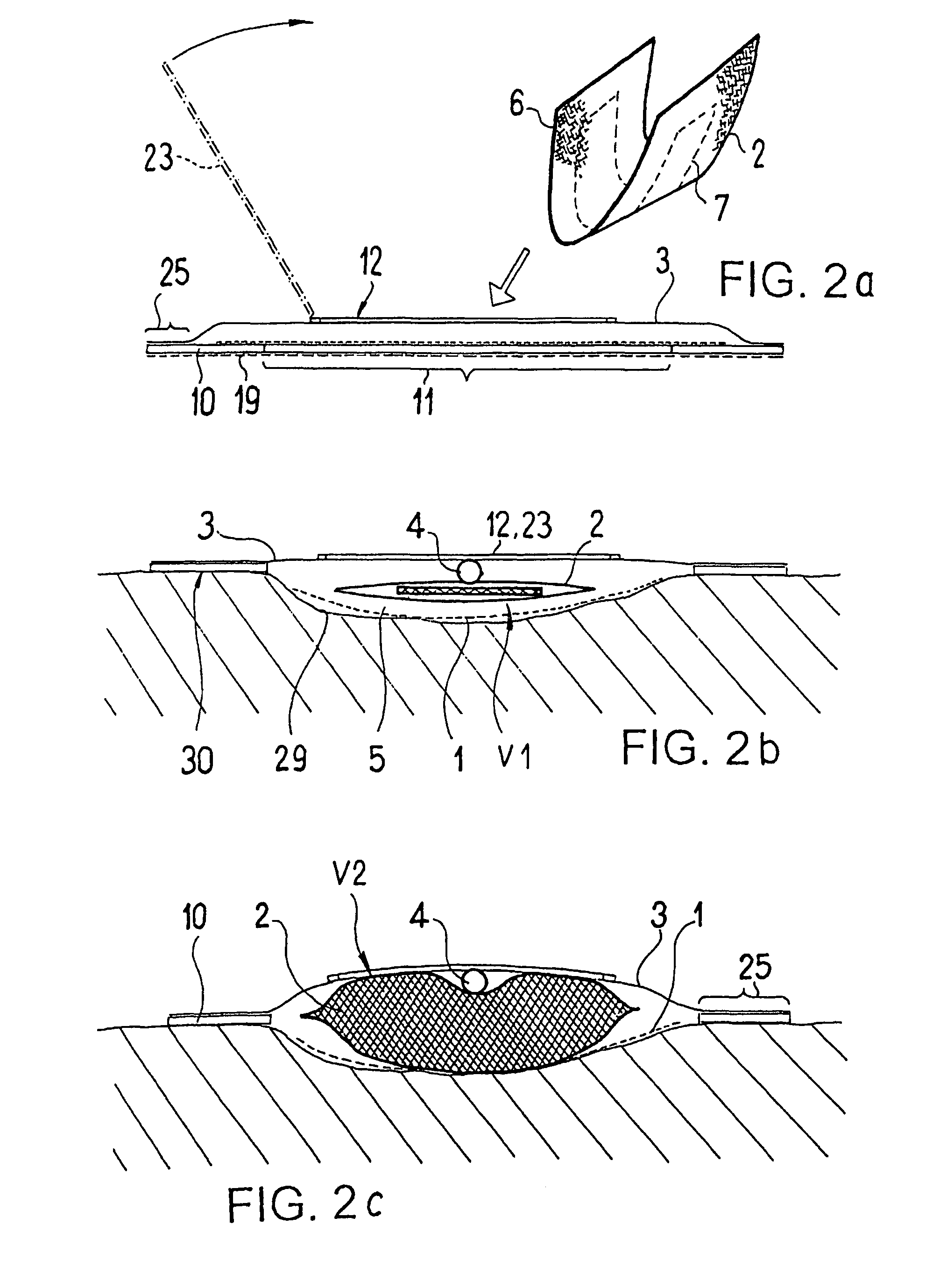Drainage device for treating wounds using a reduced pressure
a drainage device and wound technology, applied in wound drains, catheters, bandages, etc., can solve the problems of complicated production, complicated devices, and inability to meet the needs of patients, and achieve the effect of simplifying the design and cost-effectiveness
- Summary
- Abstract
- Description
- Claims
- Application Information
AI Technical Summary
Benefits of technology
Problems solved by technology
Method used
Image
Examples
Embodiment Construction
[0034]The preferred embodiments of the present invention will now be described with reference to FIGS. 1-6 of the drawings. Identical elements in the figures are designated with the same reference numerals.
[0035]FIGS. 1 and 2a to 2d show a drainage device 100 for the treatment of wounds using a reduced pressure is shown, comprising a rectangular and a sheet-like, transparent wound-covering 3, a connecting plate 10 of a hydrocolloid-like material, between which there is an absorption body 2, and a drainage tube 4. An opening 11 (compare FIG. 2a), the size of which corresponds to that of the wound, is cut out of the connecting plate 10, so that, when the device 100 is glued to the skin of the patient, a gas-tight wound space 5 results in the region of the wound (compare FIG. 2b). A peripheral edge 25 of the wound-covering element 3 is glued firmly to the connecting plate 10.
[0036]The gas-tight wound space 5 is thus bounded by the wound surface, the wound covering element 3 and the inn...
PUM
| Property | Measurement | Unit |
|---|---|---|
| pressure | aaaaa | aaaaa |
| pressure | aaaaa | aaaaa |
| size | aaaaa | aaaaa |
Abstract
Description
Claims
Application Information
 Login to View More
Login to View More - R&D
- Intellectual Property
- Life Sciences
- Materials
- Tech Scout
- Unparalleled Data Quality
- Higher Quality Content
- 60% Fewer Hallucinations
Browse by: Latest US Patents, China's latest patents, Technical Efficacy Thesaurus, Application Domain, Technology Topic, Popular Technical Reports.
© 2025 PatSnap. All rights reserved.Legal|Privacy policy|Modern Slavery Act Transparency Statement|Sitemap|About US| Contact US: help@patsnap.com



